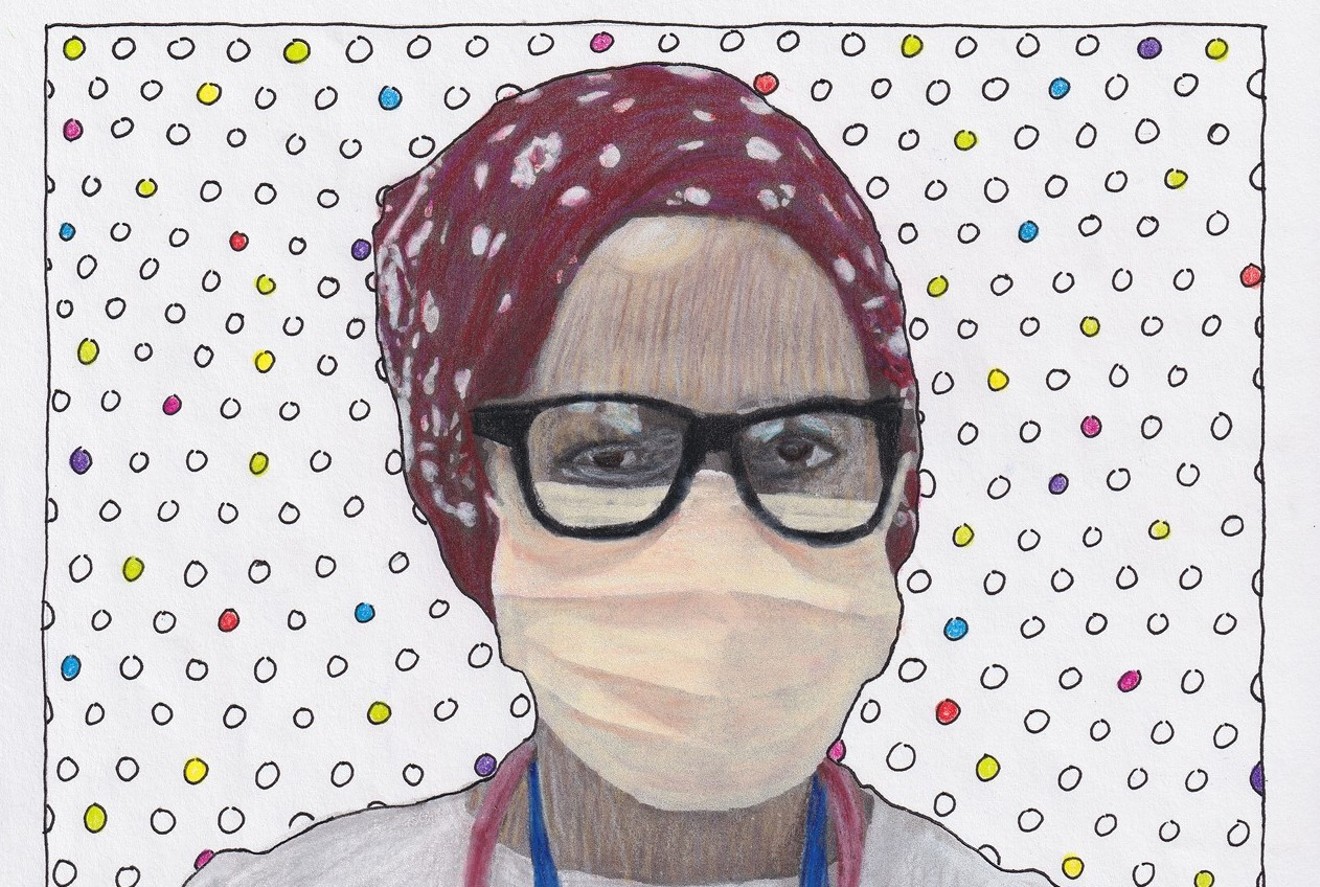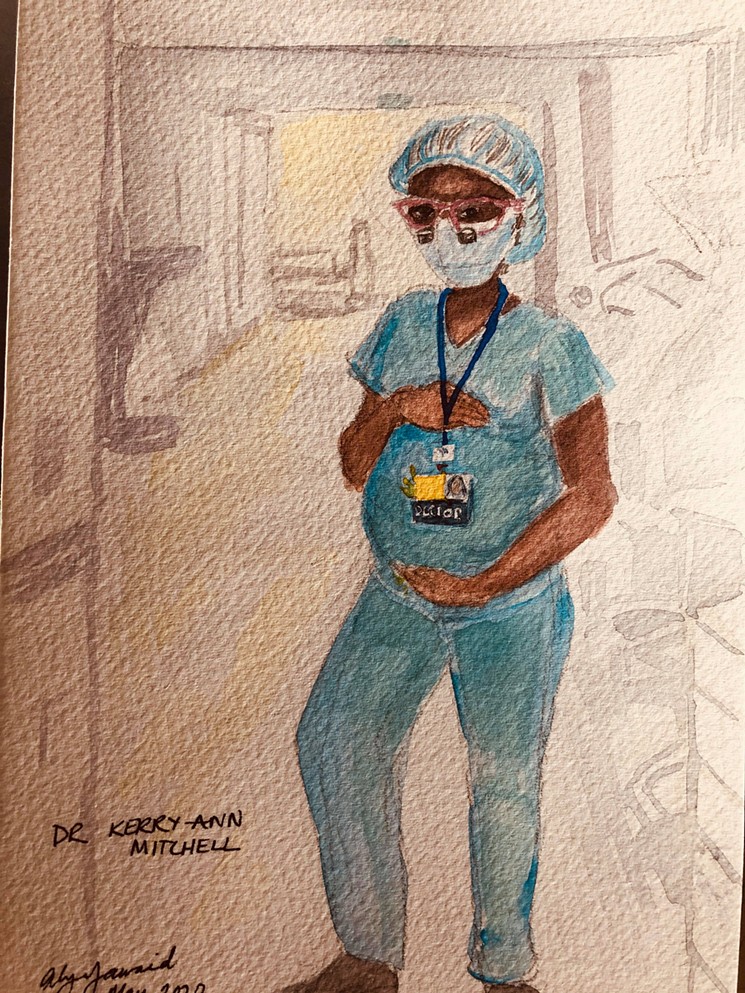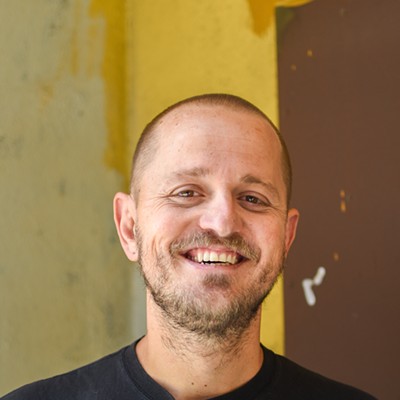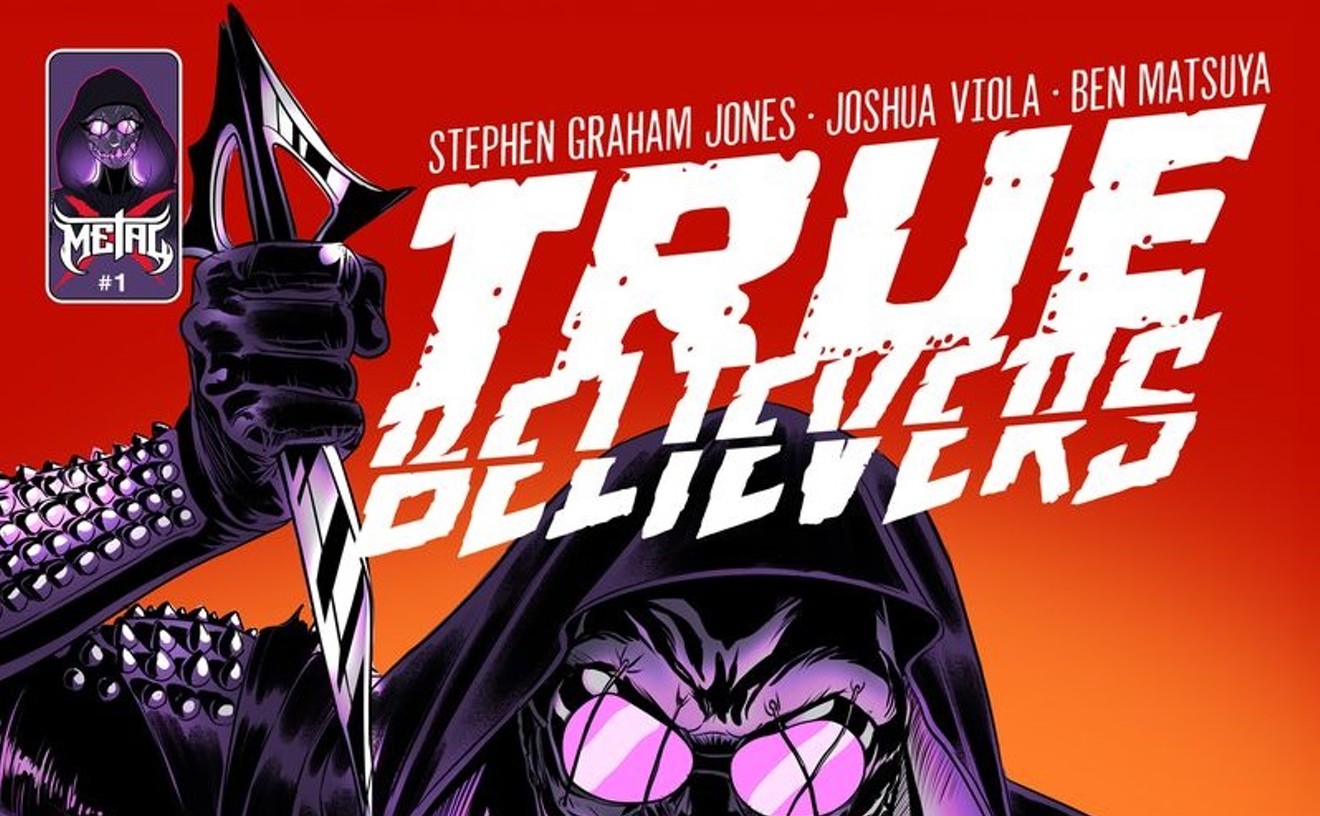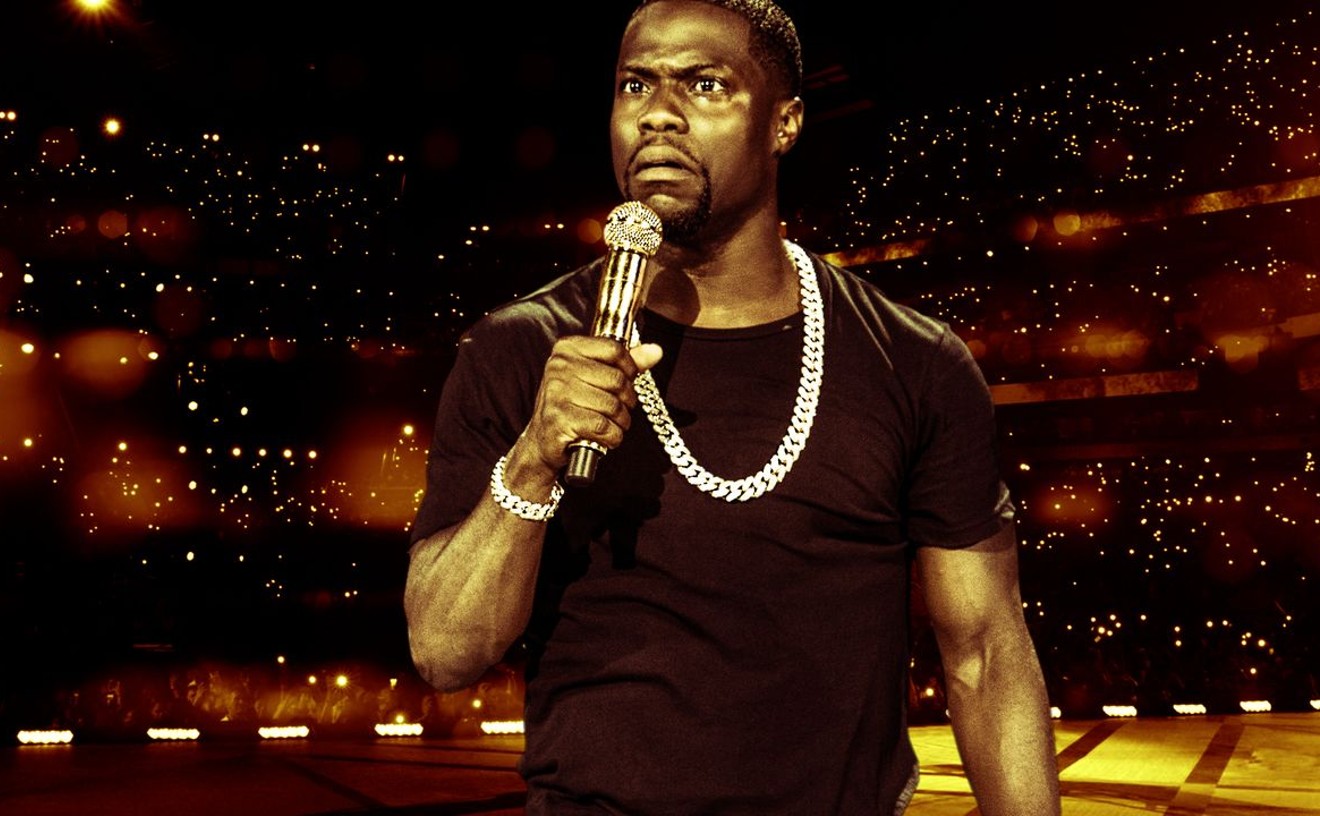The art was overwhelmingly positive, fueled by hope: Our country might be shutting down, but at least we were getting along.
One of the first of many murals to make national headlines was painted in Denver, at East Colfax Avenue and Williams Street, by Austin Zucchini-Fowler, a hobbyist artist and full-time swim coach of aspiring Olympians. The painting, titled “Healthcare Hero,” depicted a masked woman in scrubs, with a stethoscope, angel wings and boxing gloves.
When the image took flight, drawing attention around the world, Zucchini-Fowler was shocked. Although he had been painting for around a decade, he had only done a few murals. But within weeks, his pointillist style became as recognizable as the work of any of Denver’s heavyweight street artists, from Thomas “Detour” Evans's colorful portraits to Koko Bayer's hope hearts.
“Prior to the pandemic, I was just starting to get into street art,” Zucchini-Fowler says. “It’s more my passion or hobby, not necessarily a career. When the pandemic hit, I created that 'Healthcare' piece that went viral and was super well-received. It opened a bunch of doors and opportunities, and turned into a body and series of work all across Denver.”
While other people were losing their jobs, Zucchini-Fowler's accidental art career was taking off. Street-art big shots were paying attention — some embracing him, others seething with envy at what looked like his overnight success. He started getting calls for commissions, T-shirts, prints and other merch. In the months since the pandemic began, he's painted fifteen more wall portraits, many of them showing medical professionals. His newfound success was unnerving: Art had always been his religion, he says, not a job; he'd painted "Healthcare Hero" because he believed.

Austin Zucchini-Fowler working on his teacher appreciation mural on the "Wall of Gratitude" behind Bigsby's Folly.
Lauren Antonoff
He donated a file of the portrait to any health-care worker who wanted to use it to boost morale, and gave forty prints and a thousand stickers of the image to hospitals nationwide. He also created an original painting of "Healthcare Hero” and donated it to St. Anthony Hospital in Lakewood.
Even as Zucchini-Fowler was using art to honor these heroes, the New Yorker put moving portraits of health-care workers by Chris Ware and Owen Smith on its covers. Here in Denver, Karlee Mariel and Armina Jusufagic, the team behind the creative agency Zada, painted one mural of a doctor with a Wonder Woman mask, and another of two women wearing medical masks kissing.
Dr. Sarah Rowan, a Denver Health infectious-disease specialist, took note of all the tributes; while she and her colleagues appreciated the attention, she was troubled that much of the art did not include women of color. Rowan, who is white and also a hobbyist artist who takes classes at the Art Students League of Denver, wanted to honor her underrepresented colleagues.
“I was thinking I like to draw and paint, and I’ve done some portraiture. I’ll reach out to this physicians' group I was in," she recalls. "I'll do some portraits, and it will never go anywhere, but it will be fun." So she put out a call for photos, and women doctors of color from all over the country inundated her with pictures of themselves wearing personal protective equipment.
When Rowan saw how many had come in, she thought she’d do a photo collage. But then she had a better idea: She reached out to artist friends to see if they would be interested in helping with a project to capture many of these heroes in paintings. Joined by her mother, friends, professional artists, doctors she had never met and other volunteer painters, Rowan launched Women of Color on the Frontlines: Portraits of Unsung Heroes, and put the resulting pieces on a website of the same name.
After seeing the portraits of themselves and colleagues on the website, “people are so touched,” Rowan says. “The response is overwhelmingly positive. People are framing them, putting them in their offices. Some artists have mailed the doctors physical copies. Their responses are very appreciative. They appreciate being seen.”
Of the online portraits, 95 percent depict female doctors. While Rowan acknowledges that other medical workers, including nurses, have been at greater risk because they spend more time with COVID-19 patients, she also notes that it’s important to celebrate women of color who are in positions of authority after spending years earning their white coats.
“It’s pretty cool to honor the work and sacrifice it takes to get a medical degree — and how many women of color are in that position of power,” Rowan says.
While she hopes that the portraits can be displayed in a gallery exhibit someday, so far the work has only been on her website and the McNichols Building website, which is hosting a virtual exhibit of a few of the pieces through January 3. Unfortunately, the work was being posted just as Denver Arts & Venues staff, who had curated the McNichols project, were furloughed because of citywide cuts; most of the images never went up online because the agency didn’t have anybody left to finish the job, says Rowan. (Ironically, many of those Denver Arts & Venues workers were redeployed to help with COVID-19 testing and contact-tracing efforts, becoming health-care heroes in their own right.)
The series proved particularly powerful over the summer as people clashed in the streets — and by the McNichols Building — over racism and police violence. “It was nice, during the height of racial tensions, to have something positive with race going on,” Rowan says, noting that the project was partly designed to address inequity in the medical profession. “It’s nice to be able to highlight successful people."
In recent months, Women of Color on the Frontlines has continued to grow, and Rowan recruited the nanny she'd hired while spending long hours on the front lines to help with the website. “It floored me how popular it was,” she says. “Close to 300 people have submitted photos now. We have 225 portraits online, over 100 different artists who have done them. Artists were like, ‘What can we do? How can we contribute?’ You can only make so many masks or drop off so many doughnuts at the hospital.”
In order to avoid becoming the artistic equivalent of a doughnut, Zucchini-Fowler has broadened the focus of his own art to celebrate restaurant workers and others hit by COVID-19. He was honored by the World Boxing Council when the organization used his imagery on its Green and Gold WBC Belt for its welterweight division; Denver Health commissioned him to create a health-care hero mural for its campus.
But for him, the biggest reward is still the response of doctors and nurses who have written notes thanking him for his work and sent photos of themselves posing in front of his original piece.
Says Zucchini-Fowler: "That really inspired them and motivated them at a time they were struggling."
For more, go to the Women of Color on the Frontlines: Portraits of Unsung Heroes webpage; See Zucchini-Fowler's work online.

